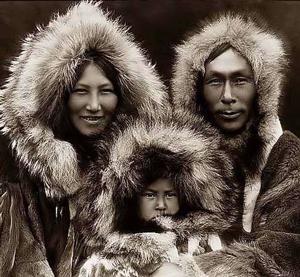
Dear Sticky Wicket
I am confused about the label "Eskimo." Is it offensive? Also, do Eskimos live only in Alaska?
~Wondering in West Palm Beach, Fl.
Dear Wondering,
An Eskimo is a member of an indigenous people originating from Alaska, Canada, Greenland, and Siberia. There are two principal groups of Eskimos: The Yupik, who live chiefly in central and western Alaska and eastern Siberia; and the Inuit, of whom there are three subgroups – the Inupiat of northern Alaska; the Inuit of Canada; and the Kalaallit of Greenland (who also identify themselves as "Greenlanders"). Eskimos are considered to be the world's most widespread aboriginal group and one of the most resilient given the severe climate of the Arctic region to which they have adapted.
While it is true that the usage of the label "Eskimo," has come under harsh scrutiny for its seemingly offensiveness in the past several decades, it is not true that "Eskimo" insults all Eskimos. It depends on to whom you are ascribing the term.
The Inuit of Canada and Greenland find "Eskimo" pejorative, because it was originally believed to mean "eater of raw meat" and was bestowed by European explorers and non-Inuit-speaking people. However, Lawrence Kaplan, Professor of Linguistics at University of Alaska Fairbanks, acknowledges in his article, "Inuit or Eskimo: Which names to use?" that the derogatory interpretation of "Eskimo," is mistakenly applied. He writes, "Linguists now believe that 'Eskimo' is derived from an Ojibwa word meaning 'to net snowshoes.' "
Still, in 1977, The Inuit Circumpolar Conference, an international non-government organization that represents approximately 150,000 Inuit, endorsed the designation "Inuit" for all Eskimos regardless of ethnic, cultural, and, above all, linguistic distinctions. Because the Yupik and the Inupiat have no translatable word for Inuit in their respective languages, "Eskimo" remains an acceptable term of description in Alaska and Siberia.
And, as The American Heritage Dictionary of the English Language (2009) maintains, despite the various labels, "none of them can be used of the Eskimoan peoples as a whole; the only inclusive term remains Eskimo …. [It] continues in use in all parts of the world, especially in historical and archaeological contexts, and in reference to the people as a cultural and linguistic unity."
The negative stereotyping that's associated with the label "Eskimo" is, however, problematic. Eskimos have long been portrayed in popular culture as a primitive and isolated group who live in igloos, rub noses, and subsist on whale blubber and fish. The Native American awareness website displays cartoons of the happy, slant-eyed Arctic dweller posed just steps away from his igloo, clad in fur parka, and wielding his spear, or fishing pole because this is how newspapers and magazines regularly illustrate these Native Americans. In fact, the site sponsors the "Stereotype of the Month Contest" to expose Native stereotypes in the media. Commercial advertising companies use this same one-dimensional imagery of Eskimos appearing as emblems for antifreeze, ice cream bars, and any merchandise associated with snow and cold.
These representations are antiquated to be sure, but they persist. And they deny Eskimos the opportunity to be seen as legitimate members of, and contributors to, modern-day society. As with the dismantling of all stereotypes, the challenge is to reconcile misrepresentation and authenticity.
